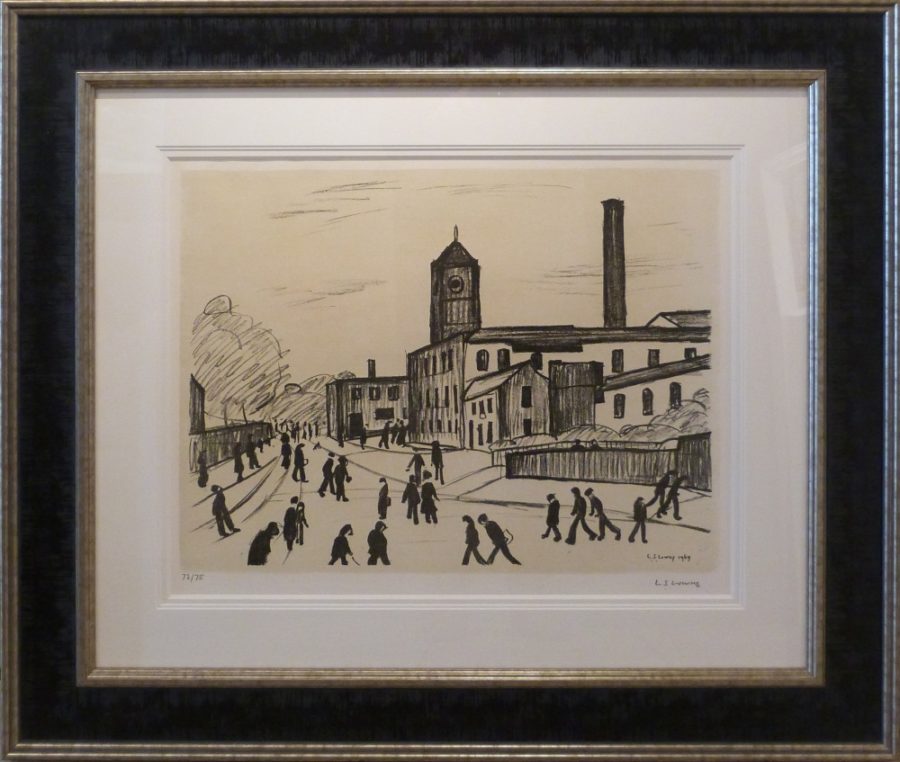Lowry Lithographs – More Than a Print
Last updated onIn today’s modern art world, less and less emphasis is put on the printing process itself when viewing and purchasing limited edition prints, largely due to the fact that most modern limited edition prints are now produced using the outstanding giclee process. Taken from the French ‘spray or spatter of ink’, giclee allows the original image to be scanned and uploaded and then reproduced with stunning accuracy onto the chosen surface, whether that be paper, canvas or aluminum for example.
Although this technology is widely available now, historically this was not the case and the printing process was a much more artisan and labour intensive process. Many reproduction techniques exist including silkscreen, etching and lithograph which is the topic of todays subject.
Understanding the lithographic process is to key to understanding the value disparity between other printing techniques and in explaining why lithographs can often be described as ‘original lithographs’.
The Lowry limited edition print market is a case in point where the artist’s signed limited edition prints have become increasingly collectible with editions of 500 and 850 regularly achieving resale prices in excess of five figures, irrespective of the print method.
Amongst these signed editions however are a small number of titles including ‘A Northern Town’, which at the time of writing is available in the gallery, were produced in much smaller editions and using the lithograph process.

The term lithograph originated from the word limestone, reflecting the limesstone block or plate that was traditionally used to capture the original image for the lithograph print over 150 years ago when it first emerged.
As the Met expertly explain on their website, ‘lithography is a planographic printmaking process in which a design is drawn onto a flat stone (or prepared metal plate, usually zinc or aluminum) and affixed by means of a chemical reaction’.
‘First, the design for the lithograph is drawn directly onto a polished slab of limestone using an oil-based lithographic crayon or ink’.
The stone is then treated with gum arabic or a mild acid solution creating a chemical reaction essentially fixing the greasy image and ensuring that the blank areas will repel the ink upon using the stone to print the image.
As the original image is drawn directly onto the stone or metal plate, the artwork is produced specifically for the production of a lithographic print and no traditional original therefore exists. This fact along with the inevitable result that each reproduction will be different and therefore unique, leads to the classification of an ‘original lithograph’.
In the case of Lowry’s ‘A Northern Town’, an edition of just 75 numbered and signed lithograph prints were produced making it one of Lowry’s rarest editions and the closest one can get to an original within the print sphere. We are blown away to have been able to acquire such a fine example which was originally conceived in 1969. Along with our copy, there is also one currently in the collection of Tate Britain and only available to view by appointment – fun fact about The Tate by way, did you know that it’s founder Sir Henry Tate was born in our local town of Chorley in 1819? – Please note this edition is now sold.
In addition to this edition, we have also been fortunate to acquire a copy of another rare lithograph from the same series entitled ‘Francis Terrace, Salford’. Again taken from an edition of just 75, this piece comes with impeccable provenance and from a distinguished private collection.

sales@hepplestonefineart.com 01257451121

